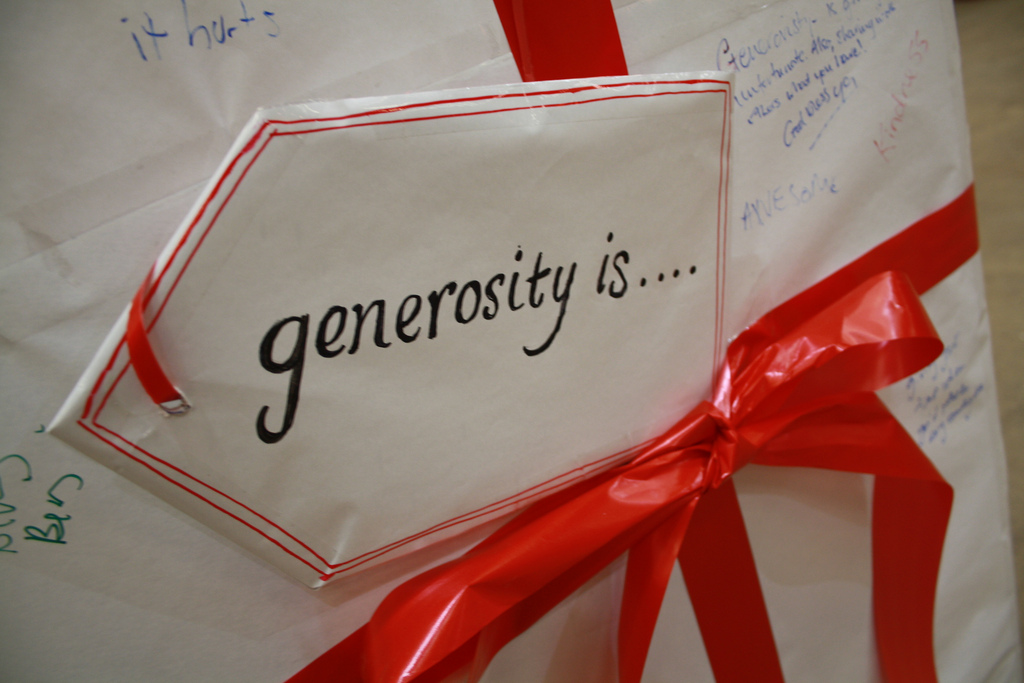By Eddie Pipkin
April 18, 2017
So, hello ministry friends. Easter has again come and gone, and are you finding yourself refreshed, invigorated, renewed, and excited in the aftermath of Christianity’s Superbowl Sunday – or are you feeling a bit of an Easter hangover?
So much happens in the run-up to Holy Week, and Holy Week itself can be such a blur (as can its liturgical cousins, Advent season and Christmas), that it’s easy to get caught in the logistics and sabotage the deeper spiritual and community connections that are the point of it all.  Check out this delightful (and funny because it’s true) take on Super-Easter ministry prep by John Crist: “Pastors Prepping for Easter Like….”
Check out this delightful (and funny because it’s true) take on Super-Easter ministry prep by John Crist: “Pastors Prepping for Easter Like….”
We habitually (and correctly) bring our best ideas and most creative content to the events of Holy Week, culminating in Easter services that call out all-hands-on-deck and put the spotlight on the best our ministry teams have to offer. But here’s a question: how do we do the week after Easter? Have we put all of our eggs in one basket (forgive the terrible pun, please) or, having reached many visitors and rekindled old relationships on this Sunday of Sundays, are we too tuckered out to give our best in the weeks that immediately follow? Do we miss opportunities to grow those rekindled relationships and spark new ones? Are we like someone who splurges for a no-expenses-spared fine French meal on the first date, only to follow up with a let’s-go-Dutch excursion to Burger King on the second (at which we refuse to share our French fries)?
Given these pivotal “event opportunities” to connect with people, it’s important to have a solid plan for following up. Here are some things to think about:
- Special visitor follow-up after Holy Week. First of all, you should have an intentional, well-organized approach to connecting with visitors always (written follow-up, a visit, a gift, a process for checking in with folks not just once but with a couple of contacts, a way to easily connect interested parties with ministry opportunities). Perhaps you need to simplify your usual process in the post-Holy Week crush. Or perhaps you have a special team identified to take on this challenge, and they are prepped and excited to go on this mission.
- Tune-ups for your regular communications platforms. A lot of churches do a spring cleaning day right before Holy Week, conscious of the need to spruce up the church property so that it is in its best possible shape for welcoming the Easter crowds. That’s a good thing – but what about some spring cleaning on the church website and social media feeds? People are going to be checking you out both right before Easter when they are looking for a church and right after Easter when they’ve come to your worship and would like to find out more about who you are. Is your info current? Your calendars up to date? Your personnel and ministry descriptions accurate?
- Exciting options on the table. Worship series, spiritual growth possibilities, and interesting choices for service in the community are all important entry points for new people (and re-energized long-timers) to indulge their Easter energy boost. While Easter can feel like the end of a long run for ministry leaders, for many congregants it feels like a beginning. We should be sure they have enticing opportunities to flex their newly juiced spiritual muscles.
None of this is rocket science for those of you who have been doing this for a while, but we still often fail to make these things happen. Part of the reason for this failure is our addiction to particular perspectives. I was surprised last week to see a renewed reference to the internet-busting “gold dress or blue dress” controversy of a couple of years ago. One of the conclusions these researchers reached after long study was that an individual’s perception of the dress color in this case was guided in part by their normal biases in visually perceiving the world around them. That’s science! But it’s ministry, too.
Here are a few post-Easter false assumptions we carry into our pre-Easter planning:
- There is no reason to spend too much time and effort worrying about the Chreasters (the Christmas and Easter only crowd). There is a strain of thought that these folks are not serious about the faith life, just interested in checking off a tradition. But while they are with you, they are with you. Make them feel as welcome as the people who come every week. Have a team whose sole purpose is to engage these unfamiliar faces. Give them a sense of what they’re missing out on the other 50 weeks of the year.
- There is no reason to spin our wheels trying to re-engage long-missing congregants who suddenly show up on Easter. That couple you haven’t seen in two years just came through the door. Celebrate them like the prodigal son in Jesus’ parable. Absolutely follow up with them with a specific, intentional conversation in the two weeks following Easter. They are there for a reason. They’ve been missing something, or they are undergoing a life change that has made them nostalgic for their former connection. Engage them.
- People are too burned out from all their Holy Week exertions to assign these post-Easter projects to them. This is a categorical mistake we routinely make as ministry leaders in which we either think we have to do it all ourselves or that we can only count on certain people (who happen to be the same people we need all-in on all of our Holy Week events). What if, instead, we developed a connectional team – a separate team specifically gifted to do this important work – who were on the bench for Easter, ready to leap into action in the aftermath?
What are your tips for following up on Easter? What successes have you seen in your own ministry experience? Our Connect! series of publications has insights on how to build strong relational ministries for all seasons. Check out these resources and more at the emc3coaching website. And get some rest. You’ve earned it.





Leave A Comment